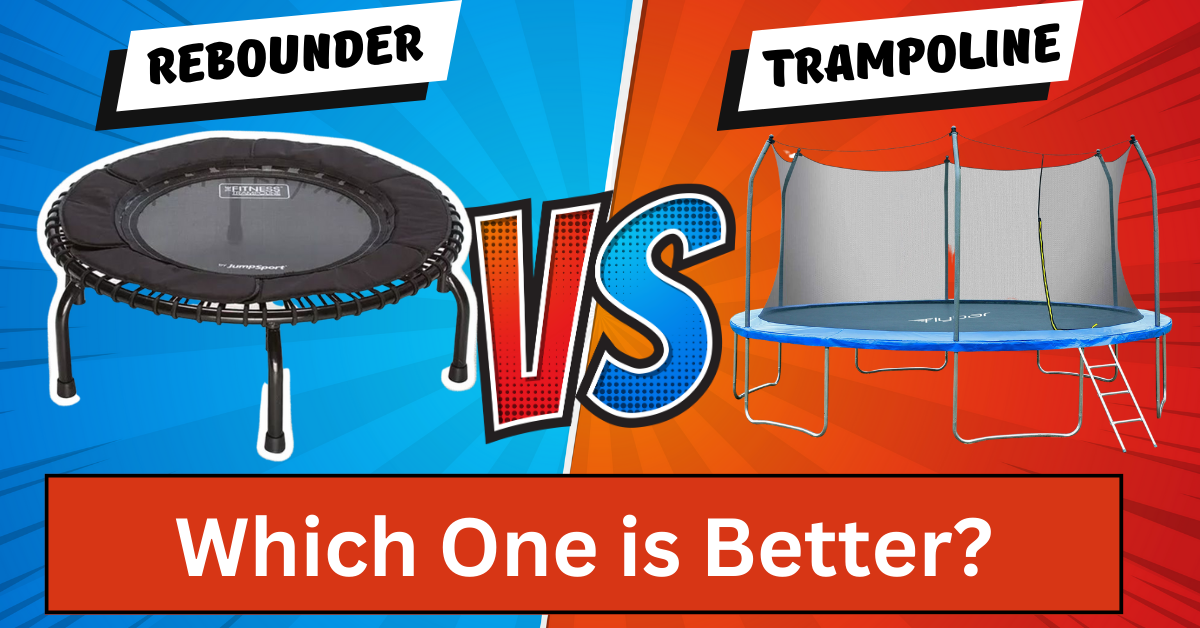Bouncing high on a trampoline is thrilling but can also result in an unpleasant dizzy or nauseous feeling for some people. I learned this the hard way as a trampoline-loving kid.
After just a few minutes of joyful jumping, I’d feel wobbly and sick. The exhilaration would come crashing down faster than my landings. It used to really bother me until I realized what was happening.
In this comprehensive guide, we’ll dive deep into why trampolines can trigger dizziness and motion sickness. I’ll draw from research and my personal experience with trampoline vertigo to explain the science behind it.
You’ll also discover proven techniques to avoid discomfort so you can rebound happily. Let’s start by understanding how balance works and why trampolines disrupt it.
Why Does Trampolining Cause Dizziness Or Motion Sickness?

Your sense of balance and stability arises from the smooth workings of your visual, vestibular, and proprioception systems. When trampolining distorts these, it causes disorientation and nausea.
What Controls Your Balance?
Balance is managed by a complex interconnection between your:
- Eyes – Visual input detects motion and orients you spatially.
- Inner ears – The vestibular system with fluid and sensors tracks head position and momentum.
- Body – Proprioceptors in muscles/joints relay information about body movements and mechanics.
- Brain – Processes all this data to determine your orientation and respond with balance reactions via the nervous system.
When these systems are in sync, you feel balanced, stable, and oriented.
Why Trampolines Disrupt Your Equilibrium
On a trampoline, you experience constant unexpected movements in multiple planes:
- Vertical jumps thrust you up and drop you down rapidly.
- Twisting, turning, bouncing at angles alters your spatial orientation continually.
- Visuals of the moving background conflict with your own unpredictable momentum.
This creates a sensory mismatch between your visual, vestibular, and proprioception systems.
Your brain struggles to make sense of the erratic inputs from eyes, inner ears, and muscles/joints. This confusion causes dizziness and nausea.
Key trampolining factors that strain balance control:
- Rapid elevation changes – Shooting upwards and downwards excites inner ear fluid.
- Somersaults/twists – Rotating rapidly mid-air disorients vestibular system.
- Ambiguous visuals – Background moving while you bounce tricks the eyes.
- Asymmetric landings – Uneven weight distribution on each foot challenges stability.
No wonder trampolines can make you feel like the room is spinning! Let’s look at ways to avoid it.
Tips To Prevent Dizziness Or Motion Sickness On Trampolines
While trampolines disrupt balance control, you can take steps to minimize disorientation:
1. Start Slow And Low
Begin bouncing with small vertical hops, keeping the background stable. Get used to regulating equilibrium with each landing before building height.
This allows your vestibular system to gradually align with the rhythmic up/down motion.
2. Stabilize Your Gaze
Pick a fixed visual reference point ahead like a tree and keep your eyes locked on it. This stabilizes the background as you bounce.
Alternatively, close your eyes fully to block out all visual stimuli. Rely solely on inner ear/body signals.
3. Stay Centered
Keep your head aligned above your pelvis, spine erect, and weight centered on both feet. Avoid asymmetric landings.
This balanced posture and centered mass aids stability reactions on the trampoline.
4. Try Grounding Cues
Lightly touch a wall or hold the trampoline handle while jumping. This supplies additional touch/force cues to reinforce balance.
5. Take Regular Breaks
Stop for a few minutes between bouncing sets. Step off the trampoline and stand/sit on steady ground. Give your equilibrium a chance to recalibrate itself.
Stay hydrated with water too. Dehydration exacerbates motion sickness.
6. Limit Duration
Restrict trampoline time to brief 5-10 minute intervals as you build tolerance. Quit at the earliest signs of nausea before sickness sets in.
7. Avoid Risky Bouncing
Attempting flips or ambitious bounces too soon can severely disorient you mid-air and landings. Stick to simple rhythmic jumping as you gain experience.
8. Avoid Heavy Meals Before
Eat light, low-fat foods to minimize digestive disturbances. Heavy meals draw blood away from the brain, worsening motion sickness.
9. Wear Sea-Bands
These elastic wristbands apply pressure on nausea-relieving acupressure points. Helps counteract queasiness.
10. Try Medication
Over-the-counter motion sickness pills like Dramamine can offer relief too. Consult a doctor first.
With these handy tips, you can master trampolining without the annoying side effects. But what if you do start feeling sick?
How To Treat Trampoline Motion Sickness
If you begin feeling dizzy or queasy on the trampoline, immediately stop bouncing and:
- Get off – Stand/sit/lie down on firm, non-moving ground.
- Close eyes – Blocks out disorienting visual motion.
- Focus ahead – Pick a spot on the horizon to stare at to reorient yourself.
- Breathe deeply – Long inhales and exhales help stabilize equilibrium.
- Use pressure points – Massaging wrist acupressure points curbs nausea.
- Hydrate – Sip water slowly to counteract dehydration.
- Wait it out – Give your balance system time to recalibrate itself – usually 30 minutes.
- Avoid rebounding – Don’t get back on the trampoline until all sensations fully subside.
- Seek medical help – If severe/persistent vertigo, consult a doctor in case medication is needed.
With rest and recovery, your queasiness should pass. Let’s look at some frequent queries.
FAQs About Trampolines And Motion Sickness
How long can I safely jump before risking dizziness?
Start with 5-10 mins of gentle bouncing, incrementally increasing time as your body adapts. Quit immediately if you feel off. 15-20 minutes is ideal for experienced jumpers.
Why do I feel sick if I do flips on the trampoline?
Somersaults and flips severely disorient the inner ear balance sensors mid-air. This conflicts with eyes/body and triggers nausea. Avoid aerial tricks until mastering basic jumps.
Will medication like Dramamine prevent trampoline motion sickness?
Yes, over-the-counter motion sickness pills can provide relief, especially if taken before bouncing. Consult a doctor first and also employ other prevention tips.
Does exercising on a mini trampoline improve lymph flow?
Yes, rebounding’s up/down motion effectively stimulates lymphatic circulation, promoting drainage of toxins and waste. Start slowly and build up duration.
Is there any permanent solution for trampoline dizziness?
Not really, but through repetitive, gradual exposure, your brain can adapt to the discordant motion cues and improve tolerance over time.
Should I avoid trampolines if I’m prone to vertigo?
Not necessarily, just take it slowly using preventive techniques. However, consult your physician if you have specific health issues exacerbating your balance problems.
How can I regain my balance faster after feeling dizzy on the trampoline?
Getting off immediately, lying down, hydrating, using acupressure, and waiting for your vestibular system to reset itself usually resolves it within 30 minutes.
The Takeaway
Trampolines can certainly cause dizziness and nausea due to the constant unpredictable motions that throw off visual, inner ear, and body balance senses. But by easing into it slowly, using stabilizing techniques, and avoiding risky maneuvers, you can minimize disorientation. Stop immediately at the earliest signs of discomfort. With practice, your brain can adapt to achieve happy trampolining without the icky motion sickness!
So bounce easy, focus your gaze, stand balanced, and listen to your body. This way, trampolines can be fun new adventures rather than nauseating nightmares! Just use common sense precautions tailored to your personal tolerance levels.
Articles You May Like to Read:













